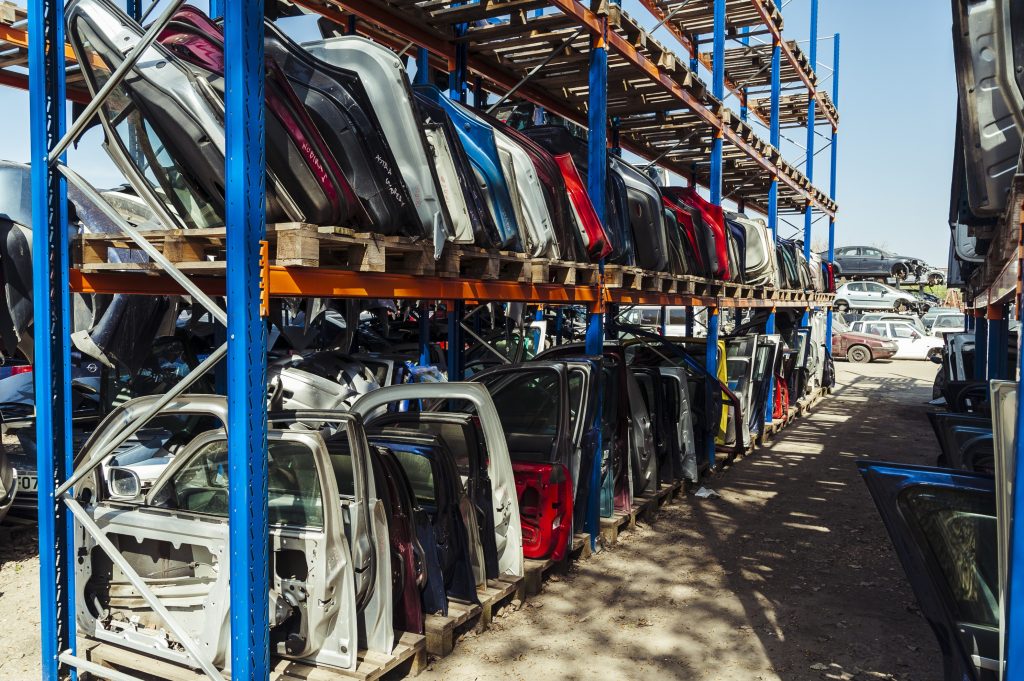Buying a car is a big-ticket expense. As such, it’s composed of valuable materials to keep it safe, durable, and impact resistant. When used and maintained correctly, owners can use a car for several years, but it’s not invincible.

Damaged and end-of-life cars rarely end up directly in landfills. Instead, 80% of its car parts can be recycled and repurposed. Even the metal is being sold back to auto manufacturers to make new steel.
Car wreckers are at the forefront of the vehicle recycling process. And everywhere globally, repurposing vehicles is often done in the same way. So, whether from Hamilton, New Zealand, or elsewhere, here’s how car wreckers help make this planet safer for everyone.
What Is Car Wrecking?
Car wrecking is the act of responsibly and efficiently repurposing damaged or decommissioned vehicles, reducing waste, and minimizing potential environmental risks. These automobiles may have been declared unrepairable after a severe accident or have reached the end of their lifespan.
It may sound a bit adventurous, but as with other places, the staff from car wreckers Hamilton and other car wrecking services aren’t recycling for fun. Car wrecking or recycling aims to reduce global pollution by properly dismantling damaged vehicles. Instead of leaving the car rotting in a landfill, car wreckers will take out reusable parts and sell them. They follow the same process to ensure damaged vehicles are reused efficiently.
5 Steps Car Wreckers Do In Repurposing Vehicles
Globally, several metric tons of metal and other materials are recovered from damaged vehicles. These recycled spare parts are given new life by recycling and repurposing. Steel, glass, and plastic components, for instance, are sold back to car manufacturers.
Car wreckers Hamilton and other similar companies start by looking at the car thoroughly, taking out the parts that can be reused, having the emptied vehicle crushed, and sold back to automobile makers.
- Thorough Car Checks
Junk vehicles are either sold or handed over to car recyclers. Once they’re with the recyclers, car wreckers begin the process by checking the car. These companies often offer cash in exchange for buying your vehicle, no matter its condition. The firm may decide to refurbish or repair the vehicle on rare occasions. In most instances, though, repurposing it is the best route moving forward.
- Identifying Parts To Sell Or Keep
When checking the vehicle, the recycler takes an inventory of car parts that may be resold to various sectors apart from carmakers. Steel, plastic, and glass are always in-demand for auto manufacturers. Other third parties, such as construction material and jewelry makers, reuse glass from wrecked cars. Recycled tires can be mixed with other materials for road construction and repair.
- Depollution And Parts Removal
The liquids inside cars, including brake fluids, petrol, oil, and antifreeze, must be drained. The process is called depollution. It’s necessary because these liquids may become harmful when improperly handled or left inside the vehicle.
Apart from these potentially hazardous liquids, recyclable parts are removed from the vehicle not for throwing but for selling. Tires, windshields, mirrors, transmission, belts, tail lights, doors, headlights, upholstery, and engine, are the most common car parts salvaged by car wreckers and similar recyclers. Recyclers can use some of these items immediately, while some may need repair. Hence, car mechanics and repair shops may also benefit from car wreckers apart from manufacturers.
Car wreckers don’t exclusively do these things to old and decommissioned cars. Even modern vehicles that can be too costly to repair may be recycled. Car recyclers will have these electronic parts taken out. Some car manufacturers have taken it upon themselves to practice repurposing, such as this recycling technology for electric vehicle motors.
- Crushing The Vehicle’s Metal Frame
After hazardous fluids and resalable and recyclable parts are taken out, some loose metal parts are also taken out using magnets. After the removal, only the vehicle’s skeleton is left for shredding and crushing. The end product will be a small pad of metal comparable to the size of a microwave oven. Reports indicate that globally, around 27 million cars are recovered for recycling yearly.
- Selling To Manufacturers
The recycled metal processed by car wreckers will be mixed with other metal forms like iron and steel before being sold to car manufacturers. Carmakers will then use these scrap metals to create new vehicles are lower costs. Besides being cheaper than newly-manufactured steel, scrap metal helps reduce pollution by minimizing the steel industry’s carbon footprint and resource-intensive practices in creating steel.
The Bottom Line
Car wreckers and recyclers elsewhere globally are valuable players in the vehicle sector. By optimizing a damaged vehicle’s usability, these individuals are instrumental in reducing pollution. Repurposing cars use fewer resources than making new ones, preserving the environment in the process.


